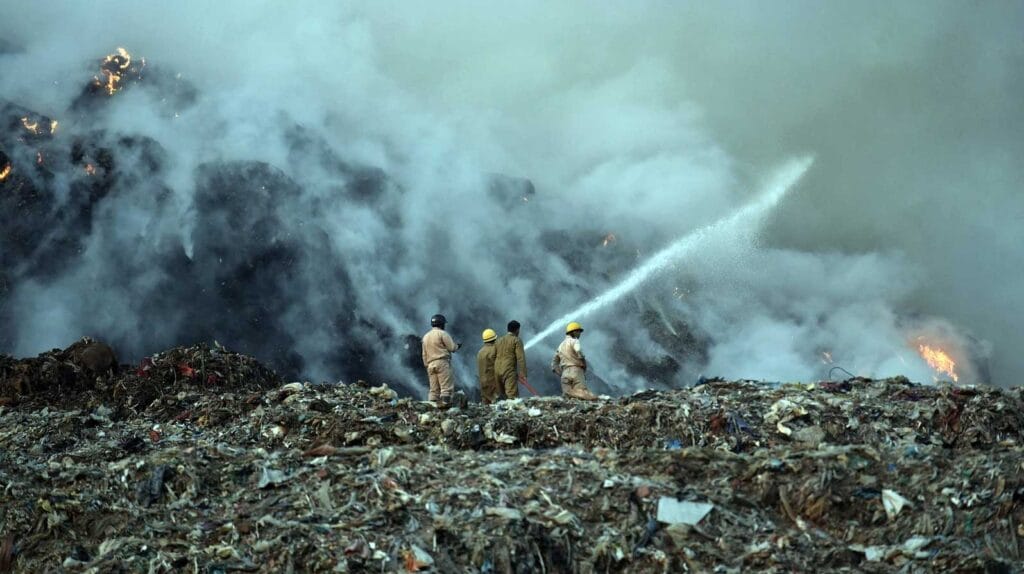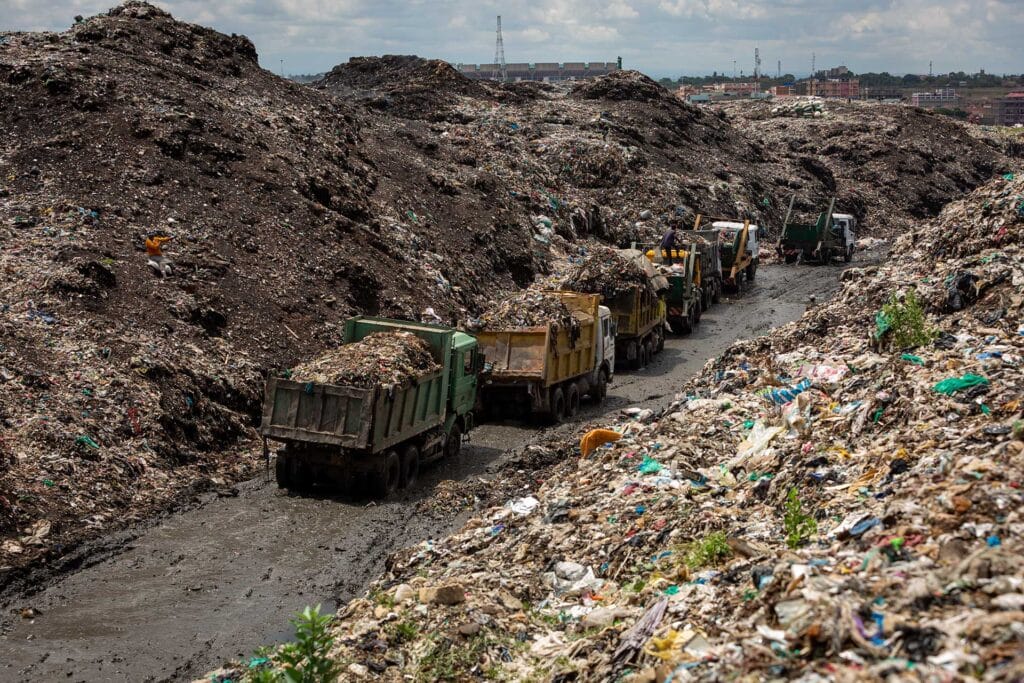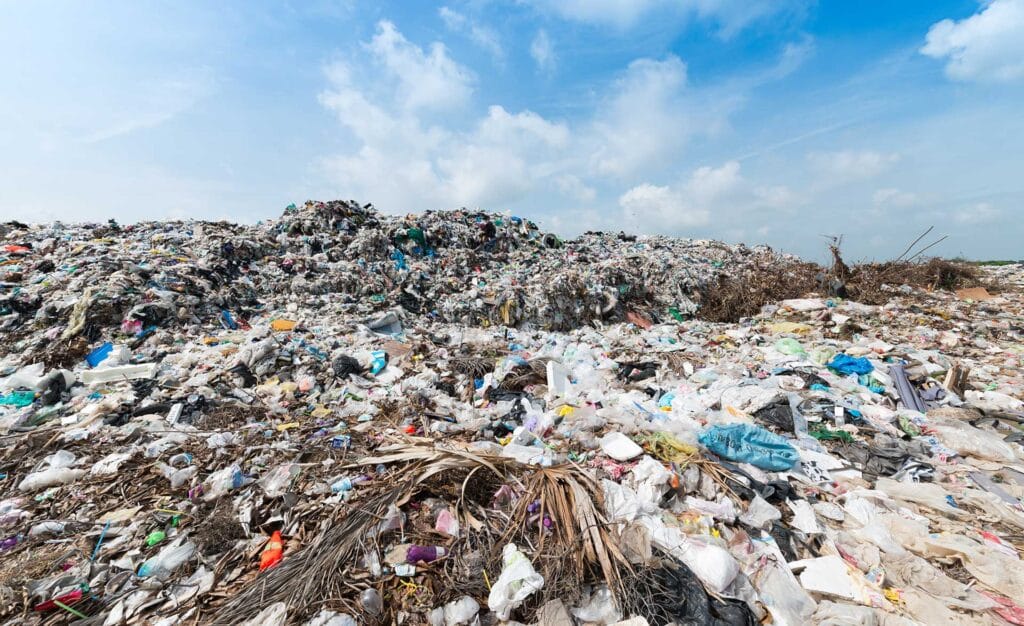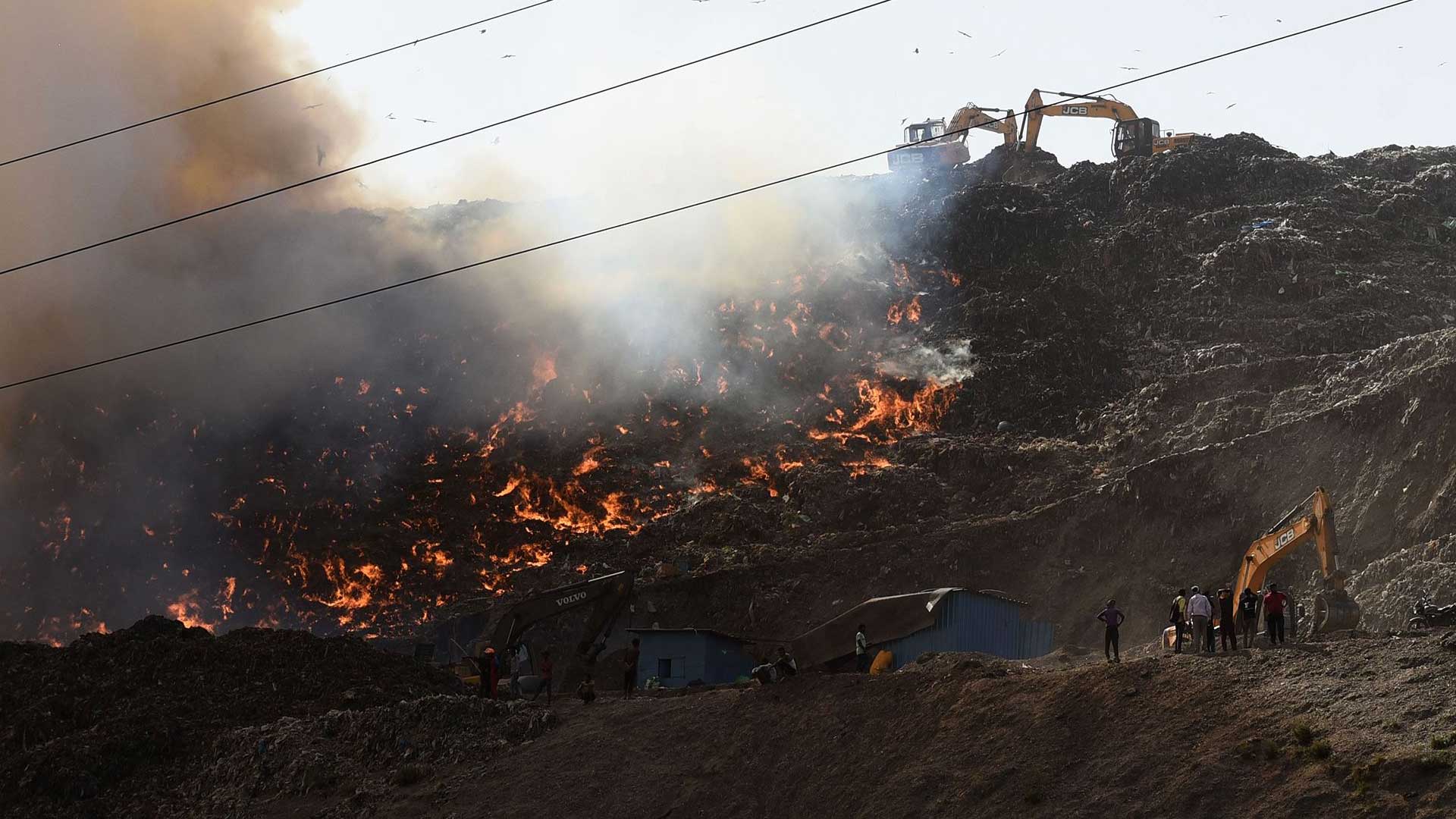It has been a year since I’ve written about this, but we continue on with some of the same conversations that were highlighted last year, but this time with some added nuances and recent happenings. This is one of those things that get talked about when some disasters happen in those landfills but then are immediately forgotten by the people, the media, the government and everyone in positions of authority. The only ones to not forget about the problem are the ones who live next to the landfills, the ones who face it and its effects day-in and day-out every single day, the ones whose pleas for help are blissfully ignored and ultimately end up becoming the casualties when disaster strikes.

On the evening of 21st April, 2024, the residents of the adjoining slums noticed smoke coming from the landfill. Delhi was battling high temperatures along with dry conditions. This had ignited the combustible gases that were produced by the landfill. The air continued to thicken with toxic and pungent smoke, making the residents choke in their own homes. It took the brave firefighters 36 hours to bring the inferno under control. These fires have now become a regular occurrence once the dry summer season commences in Delhi, with the temperatures going north of 40oC on most days.
The monsoon season doesn’t bring any respite either as it invites in a different kind of problem. The landfill starts to rot faster than at any other time during the year as the chemicals and organic matter interact with the moisture in the atmosphere and release harmful gases into the atmosphere and a horrid smell to accompany that as well. The narrow streets of the slums are filled with the toxic and muddy water running off of the landfill.

These conditions are optimum for mosquito breeding, water-borne diseases, and skin problems. The polluted environment also aggravates infections, asthma, tuberculosis, pneumonia etc. The local clinics often are not able to cater to these problems, and the patients are forced to go to hospitals further away, whether government or private. This is also not good for the dairy farm, which is right next to the landfill, the milk from the buffaloes can get contaminated if the animals drink polluted water by chance.
With so much going on, disaster and hardship striking the residents of these areas every so often, the authorities and people in power still refuse to do something about it. A recent report by English Jagran stated that waste removal from the three landfills in Delhi will be further delayed because the previous tenders had expired. The National Green Tribunal has apparently asked for a review and a report on this incident from the CPCB and the MCD.
The Chief Minister of Delhi, Arvind Kejriwal had stated that the garbage mountain in Okhla would be flattened by December 2023, the Bhalswa landfill will be flattened by March of 2024, and the deadline for Ghazipur would be in December 2024. Well, two of the three deadlines have come and gone and still, the garbage mountains continue to grow in size, with more and more municipal waste being dumped there every single day. The Indian Express reports that there are apparently new deadlines which have been set for these three landfills, which are: 2024 for Okhla, 2025 for Bhalswa, and 2026 for Ghazipur. The Okhla landfill was declared exhausted in 2010, Bhalswa exceeded its capacity in 2006, and Ghazipur had also been exhausted by 2002.

All of these reports time and time again point to a much deeper issue which is yet to be addresses. If not remedied or controlled, I am afraid that more landfills may pop up in and around the city, polluting neighbourhoods and risking the health of lakhs of people who live around them. It has to be admitted that waste management is not done in an organized, sustainable manner which encourages the maximization of the three R’s (Recycle, Reuse, Reduce). Burning all this garbage is not a way out of it either, even if it is to produce electricity, as more would just keep coming in.
There need to be other ways of handling the waste. In the short term, it is paramount that the some of the tallest summits of garbage mountains be scaled, and brought back down. These mountain ranges are not good for health and are hazardous to everyone who work there or live around it. The authorities and people in power need to take proactive action to clear these up as soon as possible, and reduce the suffering of the common citizens. I close with these lines to reflect upon;
“I left my home in search of a better life,
Who knew where fate took me,
I traded a life of clean food and greenery,
With that of squalor, trash and suffering,”
“There’s money in the big city,” they said,
“You’ll get a job,” they said,
Well, I did get a job, I became a victim, Of the Almighty Mountain of Garbage.”

